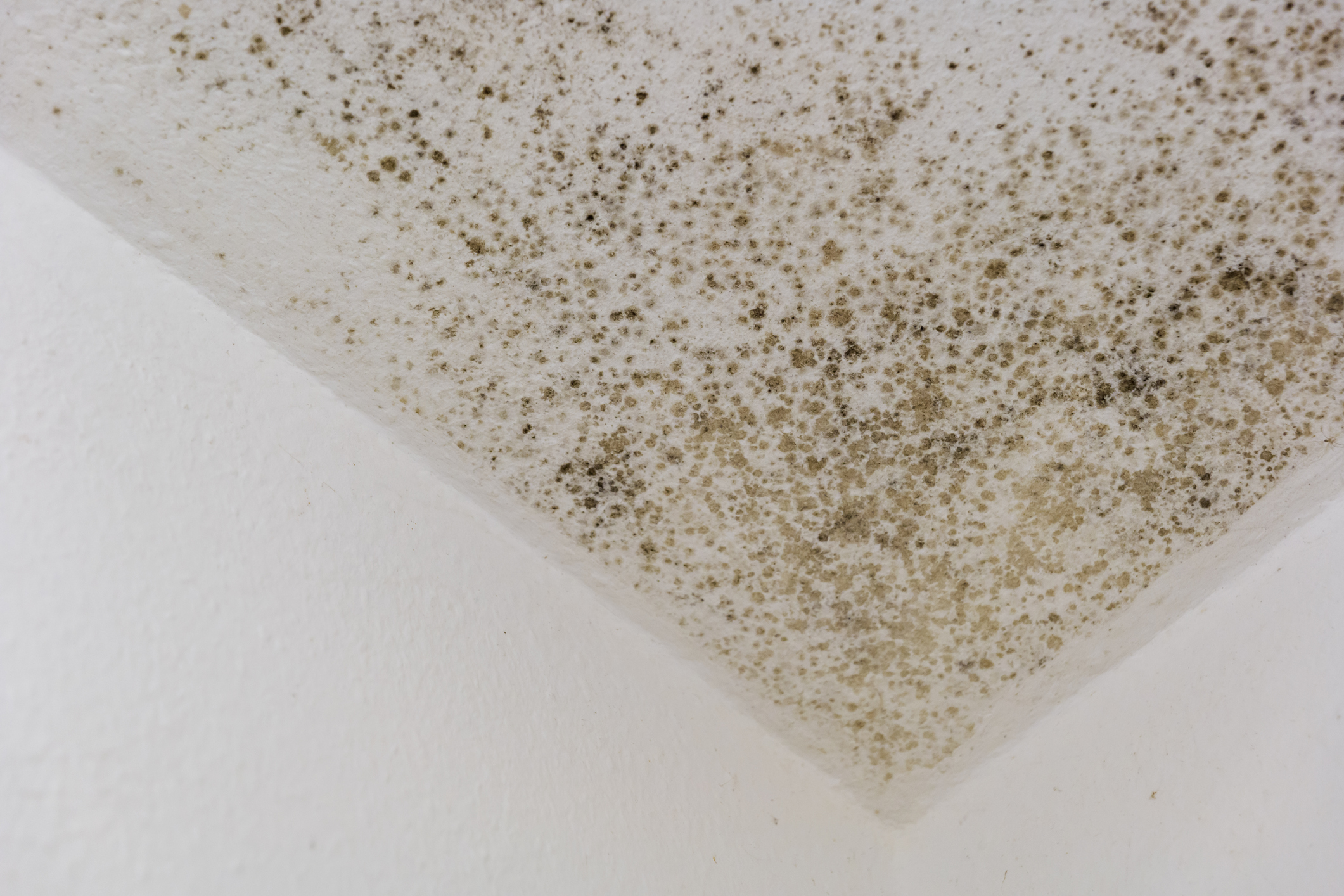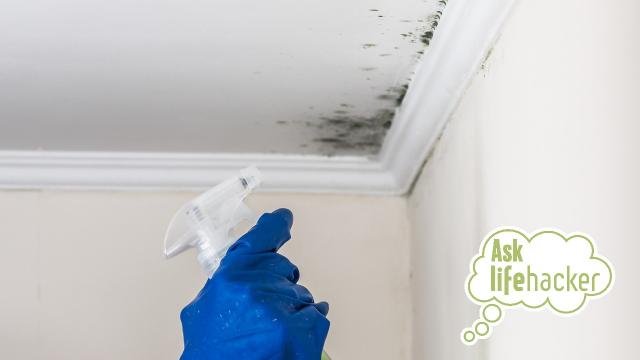It’s mould season here in Australia. Is that a weird thing to say? Can there even be a mould season? Perhaps, but it’s also not a wrong statement to make. After months of constant rain in parts of Australia, it seems like mould has found its way onto everything we own. The most annoying thing about spotting mould on our ceilings and walls is trying to figure out how to remove it.
If you’ve looked up at your ceiling and spotted mould, never fear, because in this week’s Ask LH we are going to show you how to remove it.
How to remove mould from your ceiling

If there’s one thing you should know about mould, it’s that you shouldn’t ignore it once you first spot it on your ceiling.
Sure, you might be someone (like me) who wants to push your problems to the back of your mind but you’re playing a risky game if you let mould fester in your home.
Not only are there a bunch of health complications that come with mould exposure, but it’s also just super gross to look at.
There are a few ways you can remove mould from your ceiling so it depends on your circumstance on what method works best for you.
Remember: Always wear gloves when cleaning the mould. Not only are you using chemicals to clean it, but the mould itself can also be harmful to touch. Oh, and it’s always best to wear a face mask and goggles so you aren’t breathing in said mould and chemicals, or getting them in your eyes.
The good people over at Fantastic Cleaners Australia and Choice Australia have a few great suggestions on the best ways to effectively remove mould from your ceiling.
Bleach method:
Note: Bleach is not always recommended for mould removal as according to Choice it needs to be at 10 per cent potency to be effective. Additionally, there is a risk of the bleach simply stripping the colour from the mould, instead of actually killing it. On elements like wood and plaster (relevant for ceilings), Choice reports that, at best, bleach can remove the mould from the surface but may not kill any growth building beneath.
And finally, on certain surfaces (like tile and grout) bleach can cause damage which may make the areas more susceptible to mould in the future. Not great.
In any case, if it’s all you have and you are adamant that you would like to use bleach to clean mould, here is the guide on doing so, per Fantastic Cleaners.
- Pour chlorine bleach (or whatever bleach you wish to use) directly into a spray bottle and start spraying the mould patches on your ceiling The corners may be harder to clean so pay extra attention to those spots
- Open the windows (probably best to do this step first) to let all the toxic bleach fumes out. Let the bleach work its magic for around 30 minutes. You can also scrub it with a sponge if needed
- Rinse the bleached area with water and let the ceiling dry
- Keep in mind that you might need to do a second round of bleaching to remove all the mould if there’s still some hanging around
Vinegar method:
If you’re looking for a more environmentally friendly alternative and don’t really want to use bleach on your ceiling, you can use white vinegar, baking soda and some essential oils.
- Mix two parts white vinegar with one part water. Then add one or two tbs of baking soda with several drops of tea tree oil (others suggest using clove oil). Foam will probably form when the vinegar reacts with the baking soda so best to use a bigger container/bucket
- Put the solution into a spray bottle and spray all over the mouldy surface. Because these are more natural products they will evaporate faster than the chemical mixture if you let it air out properly
- You can rinse with water if the smell is too much
Please do not ever combine vinegar with bleach – it will create a toxic gas.
Other methods:
- Fantastic Cleaners states you can use bicarb soda to remove mould from your bathroom ceiling as it absorbs more moisture and doesn’t need to be aired out as much as bleach or vinegar.
- Commercial mould cleaning products can be used in a number of settings
- You can seek the expertise of professional mould removers
- As mentioned above, clove oil is also quite popular for mould removal (but it is dangerous if ingested by humans or pets)
Queensland Government also suggests the following:
- a solution of 3 parts vinegar and 2 parts water
- a solution of 70% methylated spirits and 30% water
- a solution of tea tree oil and water
How to avoid mould returning
If you want to avoid mould from returning and having to go through the removal process again, here are some handy tips on how to prevent it from coming back.
- Perform regular house checks
- Watch out for any leaks/water damage to ceilings
- Clean your ceiling regularly if you’re prone to getting mould (in fact clean your whole home regularly)
- Improve ventilation and leave windows open when you can
- Avoid drying laundry inside the house
- Avoid leaving damp products inside
And if you want advice on how to clean mould off leather, we have a guide on that for you here.
If you’ve got a burning question that you need answering, send them to us and we will answer it! Your question could be featured on the nest Ask Lifehacker.

Leave a Reply
You must be logged in to post a comment.